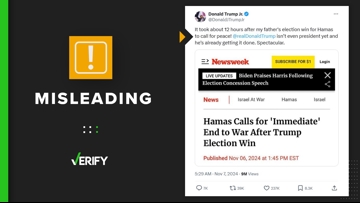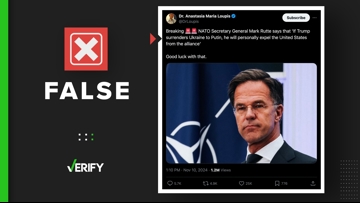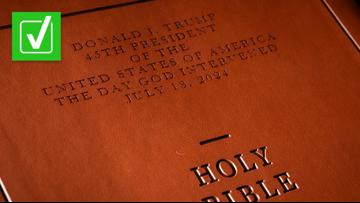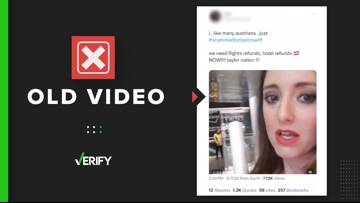During his state of the nation address in Moscow on Feb. 21, Russian President Vladimir Putin announced he is suspending Russia’s participation in the New START Treaty, which is a nuclear arms pact with the U.S.
After he made the announcement, “World War III” was trending on Twitter, along with a graph that shows the estimated amount of nuclear warheads each country has across the globe.
THE QUESTION
Do experts estimate that the U.S. and Russia hold 90% of the world’s nuclear inventory, as the viral graph shows?
THE SOURCES
- Hans Kristensen, director of the Nuclear Information Project with the Federation of American Scientists (FAS)
- The International Institute for Strategic Studies (IISS)
- Nuclear Threat Initiative
- U.S. Department of State
THE ANSWER
Yes, experts estimate that the U.S. and Russia hold 90% of the world’s nuclear inventory.
WHAT WE FOUND
The data seen in the graph was published by a team with the Federation of American Scientists Nuclear Information Project (FAS). According to FAS, the data is an estimate based on information that is publicly available, analysis of historical records and the occasional leak.
Nine countries in the world have an estimated 12,700 nuclear warheads, as of early 2022. Approximately 90% percent of those are owned by Russia (5,977) and the U.S. (5,428), the data shows.

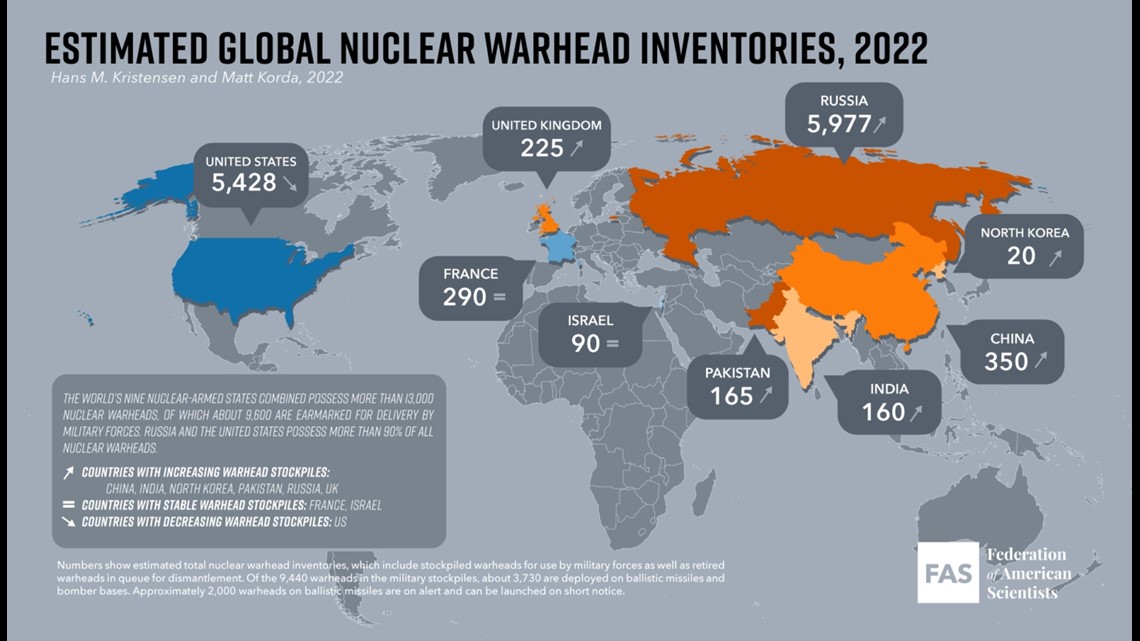
Hans Kristensen, the director of the Nuclear Information Program, told VERIFY these are the types of nuclear weapons counted:
- Weapons deployed on launchers that can be used when ready.
- Weapons in long-term storage that aren’t intended to be deployed now, but could be returned to launchers.
- Weapons used in military stockpiles that have been retired. They are likely stored in warehouses and will be dismantled at some point in the future.
Kristensen said the exact number of nuclear weapons in each country’s possession is kept mostly secret. The degree of secrecy varies from country to country.
“The United States is, beyond comparison, the most accessible. Not only in terms of the total numbers they share from time to time, but also the details of its modernization program, the discussions in Congress, budget information … because we live in a democratic society,” Kristensen told VERIFY.
He said the most secretive countries include North Korea and Israel. Behind those are Russia, China, India and Pakistan. China, India, North Korea, Pakistan and Russia are among those countries the FAS also found to be countries that are increasing their stockpiles.
For countries that don’t readily provide the information on inventories, Kristensen said the FAS uses their own research by looking at local news stories and monitoring military bases.
“We can see when new systems come in, if the base is full, and how many launchers are there,” Kristensen said. “We incorporate all that information, and also from military forces. We also incorporate research that other institutes do … It’s a big mosaic of information that we're trying to somehow make sense of.”
The International Institute for Strategic Studies (IISS), based out of London, is one institute FAS uses to compile the data. Each year, IISS publishes a military balance that provides updated available data on the military organizations of 171 countries.
The Nuclear Threat Initiative (NTI) also keeps estimates on the total nuclear weapons in the world. The NTI estimations are slightly higher than FAS, with 13,100 nuclear weapons across nine countries. Twenty two countries have materials that could be used to build nuclear weapons, the NTI believes.
Kristensen said Putin’s decision to suspend Russia's Participation in the New START Treaty will limit the amount of information shared with the U.S., like the aggregate numbers of arms. This will make it harder for researchers to track the amount of weapons Russia has.
Putin said he would respect the treaty’s cap on the amount of nuclear weapons it can have and agreed Russia would continue to exchange information about test launches of ballistic missiles.
Using estimated data to spread claims about nuclear war is irresponsible, FAS says
Kristensen was surprised to hear FAS data was being shared along with “World War III” trends on social media. He said that has never been the intention behind publishing the data.
“That’s the predicament. When you put information into the public domain, you have no control over how it's going to be used,” he said. “We don't intend to sort of portray a sky falling kind of picture. We're trying to provide factual information to people so that they can have a discussion about this.”
“In fact, portraying these kinds of World War III skies falling scenarios is a little irresponsible, because it tends to gloss over an enormous amount of details. All these nine countries in the world that have nuclear weapons. They don't have the same strategies for how to use them. They don't think necessarily in the same way, nor do they have the same arsenals. There are vast differences between them,” Kristensen added.
“Some are young; they have very little expertise in how to manage a nuclear crisis. Others are very old. They've been at this business for many, many decades and have a lot of expertise in how to manage this. So it's highly unfortunate to sort of lump everything into one box. And just to say, you know, well, that's the bottom line here that numbers in and of themselves don't tell you anything about what countries intend to do with it.”
It’s important for agencies across the globe to keep track of nuclear inventories, and also for governments to be open with their data, Kristensen told VERIFY.
“If you know something about what's going on, then you're less likely to overreact and panic. When there's total secrecy, the stage is just set for all sorts of exaggerations and rumors,” Kristensen said. “Transparency to some extent is really, really important to take the edge of that form of disinformation and misinformation that over time accumulates and can become much worse.”



